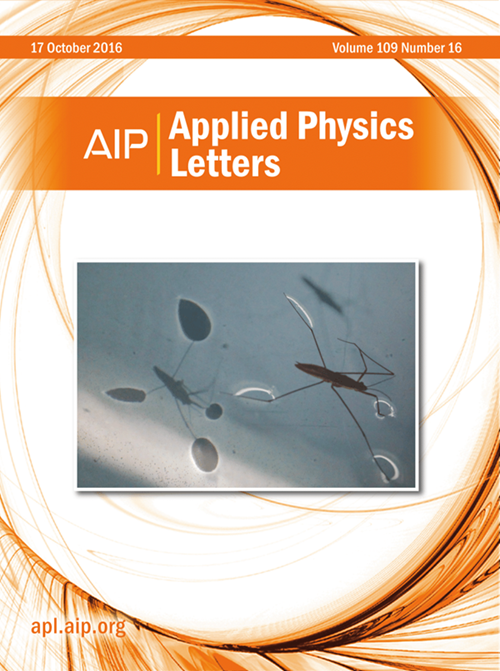Transparent and flexible electromagnetic interference shielding thin film based on sulfurized copper iodide
IF 3.5
2区 物理与天体物理
Q2 PHYSICS, APPLIED
引用次数: 0
Abstract
A transparent and flexible electromagnetic interference (EMI) shielding thin film is fabricated through a two-step process involving magnetron sputtering of copper iodide (CuI), followed by sulfurization. This Cu–I–S compound effectively combines the high optical transparency of the CuI matrix with the enhanced electrical conductivity imparted by sulfur incorporation. The optical and electrical properties of the Cu–I–S thin film can be systematically tuned by modulating the I/S ratio. Notably, the films exhibit exceptional mechanical stability, with less than 5% variation in conductivity after 5000 bending cycles at a curvature radius of 8 mm. These thin films achieve an optimal electromagnetic shielding effectiveness of ∼30 dB at the X-band (8–12 GHz). These findings reveal the great potential of CuI-based materials in various optoelectronic and flexible device applications.基于硫化硫化铜的透明柔性电磁干扰屏蔽薄膜
通过磁控溅射碘化铜(CuI)和硫化两个步骤,制造出了一种透明、柔韧的电磁干扰(EMI)屏蔽薄膜。这种 Cu-I-S 化合物有效地结合了 CuI 基体的高光学透明度和硫的增强导电性。Cu-I-S 薄膜的光学和电学特性可通过调节 I/S 比值进行系统调整。值得注意的是,这些薄膜表现出卓越的机械稳定性,在曲率半径为 8 毫米的条件下弯曲 5000 次后,导电率的变化小于 5%。这些薄膜在 X 波段(8-12 GHz)的最佳电磁屏蔽效果为 30 dB。这些发现揭示了 CuI 基材料在各种光电和柔性器件应用中的巨大潜力。
本文章由计算机程序翻译,如有差异,请以英文原文为准。
求助全文
约1分钟内获得全文
求助全文
来源期刊

Applied Physics Letters
物理-物理:应用
CiteScore
6.40
自引率
10.00%
发文量
1821
审稿时长
1.6 months
期刊介绍:
Applied Physics Letters (APL) features concise, up-to-date reports on significant new findings in applied physics. Emphasizing rapid dissemination of key data and new physical insights, APL offers prompt publication of new experimental and theoretical papers reporting applications of physics phenomena to all branches of science, engineering, and modern technology.
In addition to regular articles, the journal also publishes invited Fast Track, Perspectives, and in-depth Editorials which report on cutting-edge areas in applied physics.
APL Perspectives are forward-looking invited letters which highlight recent developments or discoveries. Emphasis is placed on very recent developments, potentially disruptive technologies, open questions and possible solutions. They also include a mini-roadmap detailing where the community should direct efforts in order for the phenomena to be viable for application and the challenges associated with meeting that performance threshold. Perspectives are characterized by personal viewpoints and opinions of recognized experts in the field.
Fast Track articles are invited original research articles that report results that are particularly novel and important or provide a significant advancement in an emerging field. Because of the urgency and scientific importance of the work, the peer review process is accelerated. If, during the review process, it becomes apparent that the paper does not meet the Fast Track criterion, it is returned to a normal track.
 求助内容:
求助内容: 应助结果提醒方式:
应助结果提醒方式:


